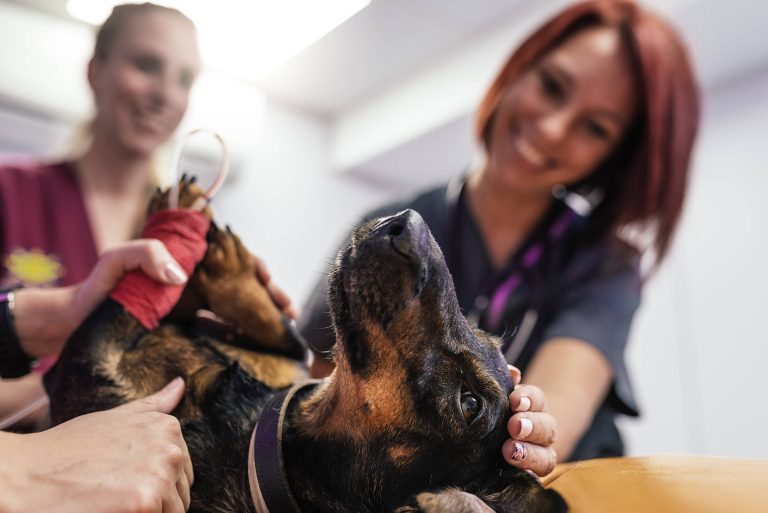Taking Care of a Pet with Diabetes

Owning a pet brings joy, companionship, and love into our lives. However, it also comes with responsibilities, particularly in ensuring their health and well-being. One of the serious health conditions that pets can develop is diabetes. As pet owners, understanding and managing this disease effectively is crucial both for the quality of your pet’s life and their longevity. In this post, we will explore what diabetes is, how it affects pets, and the necessary steps you can take to care for a pet with diabetes.
What is Diabetes in Pets?
Diabetes mellitus is a chronic condition that affects both dogs and cats and can arise at any stage of their lives. The disease occurs when the body cannot produce enough insulin or cannot use insulin effectively. Insulin is a hormone that regulates blood sugar levels. Without proper insulin function, glucose cannot enter the cells and accumulate in the blood, leading to high blood sugar levels.
There are two primary types of diabetes in pets:
1. Type I Diabetes (Insulin-Dependent Diabetes Mellitus): This is more common in dogs and occurs when the pancreas produces little to no insulin. Pets with this type of diabetes will require insulin injections.
2. Type II Diabetes (Non-Insulin-Dependent Diabetes Mellitus): More common in cats, this type occurs when the cells become resistant to insulin, even if the pancreas is producing it. This form of diabetes can sometimes be managed with diet and lifestyle changes alone, though insulin injections might still be necessary.
Symptoms of Diabetes in Pets
Recognizing the signs of diabetes early can lead to a quicker diagnosis and management plan. Here are some common symptoms:
– Increased Thirst and Urination: Excessive drinking and urination are often the first signs noticed by pet owners.
– Increased Appetite: Despite having an increased appetite, your pet may still lose weight.
– Weight Loss: Unexplained weight loss even though your pet consumes regular or increased amounts of food.
– Lethargy: Your pet may seem more tired or inactive than usual.
– Cloudy Eyes: Particularly in dogs, the development of cataracts can be a sign of diabetes.
– Urinary Tract Infections: Frequent urinary infections can be another indicator.
Diagnosing Diabetes
If you notice any of these symptoms, it is essential to consult your veterinarian immediately. A diagnosis is typically made through blood tests and urinalysis. These tests will confirm the presence of hyperglycemia (high blood sugar) and glycosuria (glucose in the urine). Once diagnosed, your vet will outline a treatment plan tailored to your pet’s specific needs.
Managing Diabetes in Pets
Managing a pet with diabetes primarily involves controlling their blood sugar levels through a combination of insulin therapy, diet, and regular monitoring. Here are some fundamental steps to manage diabetes in pets:
1. Insulin Administration
For most diabetic pets, insulin injections are a necessity. Your veterinarian will teach you how to administer these injections at home. Initially, this might seem daunting, but with practice, it becomes a routine part of your day. It’s important to adhere to the prescribed dosage and schedule provided by your vet.
2. Diet and Nutrition
A well-balanced diet is crucial in managing diabetes. Here are some dietary tips:
– Consistent Feeding Schedule: Feeding your pet at the same times each day helps regulate blood sugar levels.
– High-Fiber Diet: Fiber can aid in controlling blood sugar levels, especially in diabetic dogs.
– Low-Carbohydrate Diet: Particularly for cats, a high-protein, low-carb diet is often recommended as it mimics their natural eating habits and helps manage blood glucose levels.
– Weight Management: Obesity can exacerbate diabetes, so it’s essential to maintain a healthy weight for your pet.
Consult your veterinarian or a pet nutritionist to design a diet plan tailored to your pet’s needs.
3. Regular Exercise
Physical activity helps regulate blood sugar levels and maintains a healthy weight. Integrate regular exercise into your pet’s routine, but be consistent. Avoid sudden, intense exercise as it can cause a rapid drop in blood sugar levels.
4. Monitoring Blood Glucose Levels
Regular monitoring is vital to ensure your pet’s blood sugar levels remain within a healthy range. Your vet might recommend a home glucose monitoring system, similar to those used by humans, to keep daily track of your pet’s levels. Regular veterinary check-ups are also essential to adjust treatment plans as necessary.
Complications to Watch For
Diabetes can lead to other health complications if not managed correctly. Some of these include:
– Ketoacidosis: This is a severe condition resulting from very high blood sugar levels, requiring immediate veterinary attention.
– Hypoglycemia: Blood sugar levels that drop too low can cause lethargy, seizures, or even unconsciousness. Always keep a source of quick sugar (e.g., honey, glucose gel) on hand in case of emergencies.
– Infections: Diabetic pets are more prone to infections, particularly urinary tract and skin infections.
– Cataracts: Common in diabetic dogs, leading to blindness if not addressed.
Emotional and Practical Support
Caring for a diabetic pet can be demanding and emotionally taxing. It can be helpful to connect with support networks such as online forums or local pet health groups. Sharing experiences and tips with other pet owners can provide much-needed moral support and practical advice.
Final Thoughts
A diabetes diagnosis isn’t the end of the road for your furry friend. With the right care and management, diabetic pets can lead happy, healthy lives. Stay vigilant, maintain regular vet visits, and follow your vet’s guidance regarding diet, exercise, and medications. Your diligence and love can vastly improve your pet’s quality of life, ensuring you enjoy many more cherished moments together.
For more detailed advice tailored to your specific pet, always consult directly with your veterinarian. Remember, early detection and proactive management are key in the effective treatment of diabetes in pets. Your furry friend depends on you for their care and support – and with the right approach, they can thrive even with diabetes.





